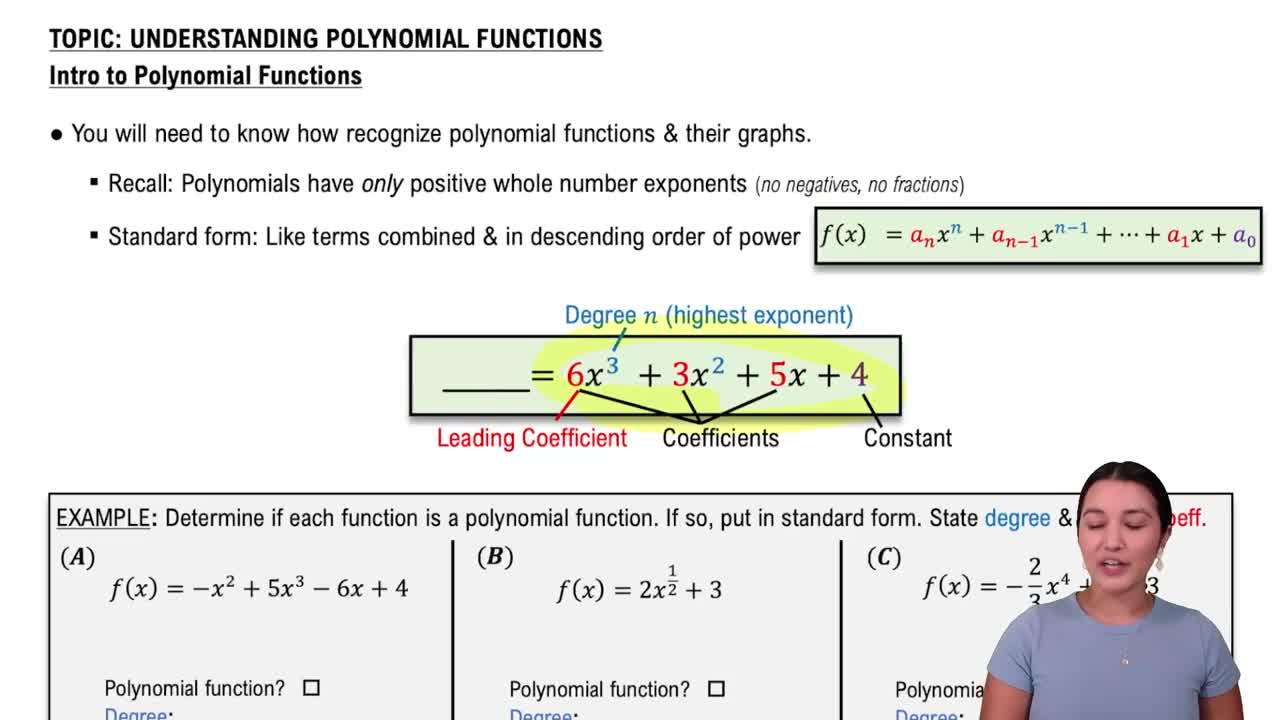Here are the essential concepts you must grasp in order to answer the question correctly.
Polynomial Functions
A polynomial function is a mathematical expression involving a sum of powers in one or more variables multiplied by coefficients. The general form is ƒ(x) = a_nx^n + a_(n-1)x^(n-1) + ... + a_1x + a_0, where 'n' is a non-negative integer and 'a_n' are constants. Understanding the structure of polynomial functions is essential for analyzing their behavior, including their roots and end behavior.
Recommended video:
Introduction to Polynomial Functions
Variations in Sign
Variations in sign refer to the changes in the sign of the coefficients of a polynomial as you evaluate it at different values of 'x'. Each time the polynomial changes from positive to negative or vice versa, it counts as a variation. The number of variations can provide insights into the number of positive and negative roots of the polynomial, which is crucial for determining its overall behavior.
Recommended video:
Descartes' Rule of Signs
Descartes' Rule of Signs is a method used to determine the number of positive and negative real roots of a polynomial function based on the variations in sign of its coefficients. For positive roots, the number of sign changes in ƒ(x) gives the maximum number of positive roots, while for negative roots, the number of sign changes in ƒ(-x) indicates the maximum number of negative roots. This rule is fundamental for analyzing the roots of polynomials and understanding their graphical representation.
Recommended video:
Cramer's Rule - 2 Equations with 2 Unknowns



